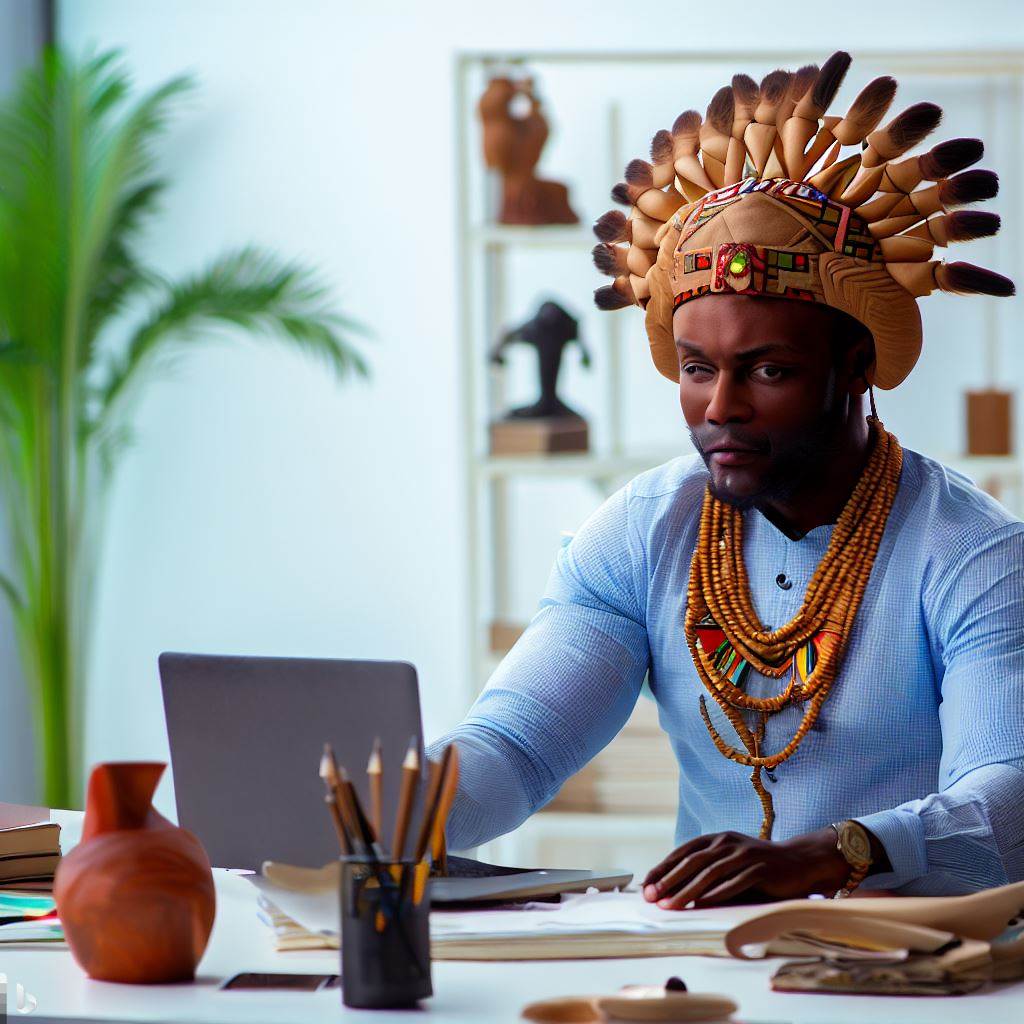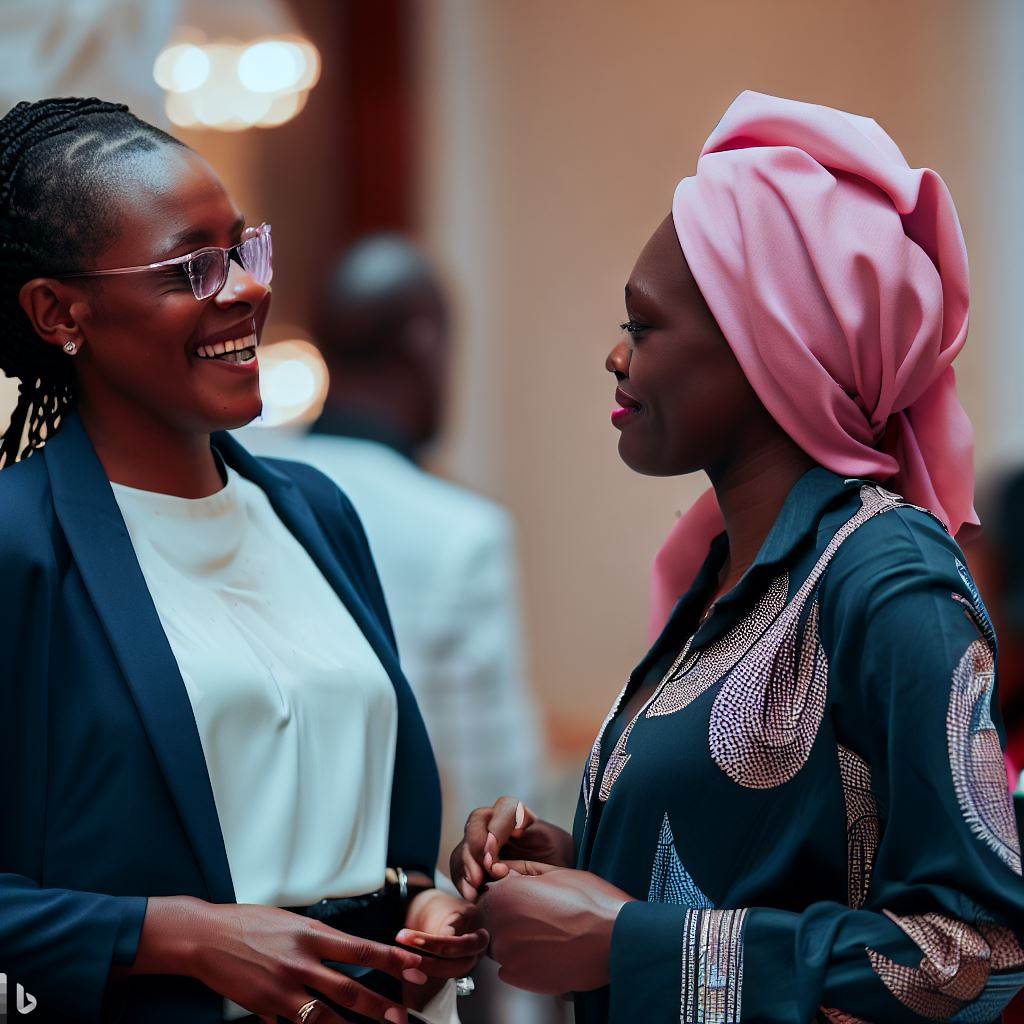Introduction
Eco-friendly design refers to the practice of creating interiors that are environmentally sustainable and resource-efficient. In contemporary interiors, the importance of eco-friendly design cannot be overstated.
As the world grapples with the negative impacts of climate change and pollution, adopting eco-friendly design has become crucial to mitigate these issues.
In Nigeria’s interior design industry, there has been a growing interest and adoption of eco-friendly design.
As the nation becomes more aware of the importance of sustainable living, designers and homeowners are seeking ways to incorporate eco-friendly elements into their spaces.
This shift in preference has led to an increased demand for eco-friendly materials, renewable energy sources, and innovative design approaches.
This blog post aims to explore the emergence of eco-friendly design as a new wave in Nigeria’s interiors.
It will delve into the benefits of adopting eco-friendly design, such as reducing energy consumption, improving indoor air quality, and minimizing waste generation.
Additionally, it will address the challenges faced in implementing eco-friendly design, such as limited availability of eco-friendly materials and high costs.
Looking towards the future, the blog post will discuss the prospects of eco-friendly design in Nigeria’s interiors.
With the government’s commitment to sustainable development and the growing awareness among the population, the potential for eco-friendly design to flourish in the industry is significant.
By embracing eco-friendly design practices, Nigeria’s interior design industry can contribute towards a greener and more sustainable future.
The Need for Eco-Friendly Design in Nigeria
Nigeria, like many other countries, is facing significant environmental challenges that need immediate attention.
Issues such as deforestation, pollution, and climate change have had a significant impact on the nation’s ecology and overall quality of life.
In this section, we will explore how traditional interior design practices contribute to these challenges and why there is a pressing need to shift towards eco-friendly design to mitigate environmental impact and promote sustainable living.
Environmental Challenges Facing Nigeria
Deforestation has become a widespread problem in Nigeria, with vast areas of forests being cleared for various purposes such as agriculture, logging, and urbanization.
Transform Your Career in Nigeria
Discover unmatched expertise with our personalized Career Consulting service. Navigate Nigeria’s job market with a strategy tailored just for you.
Get StartedThis has led to the loss of critical habitats for wildlife, increased soil erosion, and disrupted the natural balance of ecosystems.
Pollution, particularly air and water pollution, is another major concern.
Rapid industrialization and urbanization have resulted in the release of harmful pollutants into the air and water bodies, causing serious health issues for both humans and wildlife.
Climate change is yet another significant environmental challenge facing Nigeria.
Rising temperatures, unpredictable rainfall patterns, and increased incidents of extreme weather events have negatively impacted agriculture, water resources, and human settlements.
The Contribution of Traditional Interior Design Practices
Traditional interior design practices in Nigeria often prioritize aesthetics and functionality over environmental considerations.
This approach has led to the use of non-sustainable materials such as tropical hardwoods, which contribute to deforestation.
Additionally, the excessive use of synthetic materials and chemicals in furniture and finishes has contributed to pollution.
Furthermore, traditional interior designs often rely heavily on energy-intensive appliances and lighting systems, resulting in increased greenhouse gas emissions and energy consumption.
The Need to Shift Towards Eco-Friendly Design
To mitigate the negative environmental impact and promote sustainable living, Nigeria needs to embrace eco-friendly interior design practices.
Eco-friendly design focuses on minimizing the use of non-renewable resources, reducing waste, and utilizing sustainable materials.
By using sustainable materials such as bamboo, reclaimed wood, and recycled materials, interior designers can significantly reduce deforestation and waste.
They can also choose low-VOC paints and finishes that minimize air pollution and promote healthier indoor environments.
Energy-efficient lighting systems and appliances should be prioritized to reduce energy consumption and decrease greenhouse gas emissions.
Moreover, incorporating natural ventilation and passive cooling techniques in building design can help reduce the reliance on air conditioning systems, further reducing energy consumption.
Finally, promoting awareness and education about eco-friendly design among professionals, homeowners, and communities is crucial.
By creating a demand for sustainable design practices, Nigeria can encourage a shift towards a greener and more environmentally conscious society.
The environmental challenges faced by Nigeria, such as deforestation, pollution, and climate change, require urgent action.
By embracing eco-friendly design practices in interior design, Nigeria can mitigate its environmental impact, promote sustainable living, and ultimately contribute to a healthier and greener future for its citizens.
Read: Salary Expectations for Interior Decorators in Nigeria
Benefits of Eco-Friendly Design in Interiors
An eco-friendly design in interiors brings numerous advantages that not only contribute to a healthier environment but also enhance the overall well-being of individuals.
By incorporating sustainable practices and materials, eco-friendly design fosters a greener and more sustainable future.
Improved Indoor Air Quality and Health
- Eco-friendly design promotes better indoor air quality by minimizing the use of toxic materials.
- By selecting low VOC (volatile organic compound) paints and finishes, the release of harmful chemicals into the air is reduced.
- Natural ventilation systems in eco-friendly interiors enhance air circulation and prevent the buildup of pollutants.
- Improving indoor air quality can lead to a healthier living environment, benefiting individuals with respiratory conditions and allergies.
Use of Sustainable Materials to Reduce Waste and Promote a Circular Economy
- Eco-friendly design encourages the use of sustainable materials, such as bamboo, recycled glass, and reclaimed wood.
- These materials are renewable, biodegradable, and have a lower ecological footprint compared to conventional alternatives.
- Implementing a circular economy approach, eco-friendly design minimizes waste generation by repurposing and recycling materials.
- Instead of discarding, materials like old furniture and fixtures can be refurbished or upcycled to extend their lifespan.
Energy Efficiency and Cost-Saving Benefits
- Eco-friendly design incorporates energy-efficient lighting systems, appliances, and HVAC (heating, ventilation, and air conditioning) systems.
- By using LED lights and ENERGY STAR-rated appliances, significant energy savings can be achieved.
- Proper insulation and shading in eco-friendly interiors help regulate temperature, reducing the need for excessive heating or cooling.
- Smart technologies and automated systems can optimize energy usage, further reducing utility bills.
- Over time, the cost-saving benefits of eco-friendly design choices outweigh the initial investment.
Eco-friendly design in interiors not only benefits individuals and the environment but also has a positive impact on the larger community.
The advantages of improved indoor air quality, sustainable material usage, and energy efficiency are substantial.
Publish Your Professional Profile, Business or Brand
Showcase your expertise, gain trust, and boost visibility instantly on Professions.ng.
Publish NowBy adopting eco-friendly design principles, Nigeria can mitigate environmental degradation, enhance public health, and foster a more sustainable future for generations to come.
Read: Nigeria’s Interior Design Market: Opportunities and Challenges
Challenges in Implementing Eco-Friendly Design
Implementing eco-friendly design in Nigeria faces several challenges that hinder its widespread adoption. These challenges include:
Limited Availability of Eco-Friendly Materials and Products
One of the main challenges in implementing eco-friendly design in Nigeria is the limited availability of sustainable materials and products in the local market.
While there is a growing demand for environmentally friendly options, suppliers and manufacturers struggle to meet this demand.
Nigeria heavily relies on importation for many building materials and products, making it difficult to find eco-friendly alternatives.
The lack of local production and distribution channels for sustainable materials leads to limited options for designers and architects who want to incorporate green elements into their projects.
This scarcity of eco-friendly materials not only restricts design choices, but it also drives up prices due to the limited supply.
As a result, many professionals and consumers resort to conventional and less sustainable options simply because they are more readily available and affordable.
Higher Upfront Costs of Eco-Friendly Options
One major hurdle to the widespread adoption of eco-friendly design is the higher upfront costs associated with sustainable materials and technologies.
While eco-friendly options often prove more cost-effective in the long run, the initial investment required can deter individuals and companies from choosing them.
For example, energy-efficient appliances, solar panels, and green building materials may come with higher price tags compared to their conventional counterparts.
This can be especially challenging for individuals or businesses operating on tight budgets, as they perceive the higher upfront costs as a barrier to entry.
It is essential for stakeholders, including government bodies and financial institutions, to support and incentivize the use of eco-friendly materials by offering subsidies, grants, and low-cost loans.
By reducing the financial burden, more people would be willing to invest in sustainable design, leading to increased adoption.
Lack of Awareness and Understanding of Eco-Friendly Design
Another significant challenge in implementing eco-friendly design in Nigeria is the lack of awareness and understanding among consumers and professionals.
Many individuals are simply unaware of the benefits of eco-friendly design or have limited knowledge about its principles and implementation.
There is a need for widespread education and information dissemination to raise awareness about eco-friendly design.
Professionals, such as architects and interior designers, should take the lead in promoting sustainable practices and educating their clients about the numerous advantages of green design.
The government can play a crucial role in fostering awareness by implementing public campaigns, providing workshops, and collaborating with industry experts to train professionals and consumers.
Building codes and regulations can also be updated to enforce eco-friendly practices, ensuring that sustainability becomes a standard consideration in all design projects.
Basically, the challenges facing the implementation of eco-friendly design in Nigeria are diverse but not insurmountable.
Through collaborative efforts between stakeholders, including policymakers, manufacturers, professionals, and consumers, the limited availability of eco-friendly materials, higher upfront costs, and lack of awareness can gradually be addressed, leading to a more sustainable future for Nigeria’s interiors.
Read: How to Get Certified as an Interior Decorator in Nigeria

Case Studies and Success Stories
Nigeria is experiencing a wave of eco-friendly design practices within the interior design industry.
Several Nigerian designers and projects have successfully embraced eco-friendly design principles, leading to positive impacts on the environment and communities.
Here are some inspiring case studies:
1. Green Haven Residence
Designed by renowned Nigerian architect, Adeola Olagunju, the Green Haven Residence showcases innovative approaches to eco-friendly design.
The house incorporates passive cooling techniques, such as natural ventilation and shading devices, reducing the need for excessive energy consumption from air conditioning systems.
Additionally, a rainwater harvesting system provides water for irrigation, reducing dependence on the municipal water supply.
The positive impact of the Green Haven Residence extends beyond its environmental features.
The integration of sustainable materials and local craftsmanship creates employment opportunities for the community, supporting local artisans and promoting traditional techniques.
The result is a visually stunning and sustainable home that blends seamlessly with its natural surroundings.
2. The Bamboo Nest Hotel
The Bamboo Nest Hotel, located in Lagos, showcases the aesthetic and unique designs achieved through eco-friendly practices.
Conceptualized by interior designer Ijeoma Eboh, the hotel incorporates sustainable materials, particularly bamboo, throughout its interior spaces.
Bamboo is a highly renewable resource that grows quickly and requires minimal maintenance.
By utilizing this versatile material, the Bamboo Nest Hotel reduces its carbon footprint and supports sustainable forest management.
The use of bamboo is not only eco-friendly but also adds a touch of natural elegance to the hotel’s design, creating a tranquil and inviting ambiance for guests.
3. The Recycled Art Gallery
The Recycled Art Gallery, spearheaded by artist and designer Chika Uche, showcases the transformative power of upcycling in interior design.
The gallery’s interior is entirely crafted from recycled and repurposed materials, giving new life to discarded items.
Publish Your Professional Profile, Business or Brand
Showcase your expertise, gain trust, and boost visibility instantly on Professions.ng.
Publish NowThrough innovative design and creativity, the Recycled Art Gallery challenges the traditional concept of waste.
It demonstrates that with careful planning and artistic vision, materials that would have ended up in landfills can become beautiful and functional elements in interior spaces.
Apart from reducing waste, the gallery serves as an educational platform, raising awareness about sustainable design practices and inspiring others to follow suit.
4. The Solar-powered Workspace
Architect Olumide Ojo has designed a solar-powered workspace that represents a groundbreaking approach to eco-friendly design in Nigeria.
The workspace incorporates solar panels on the roof, generating clean and renewable energy to power the entire facility.
By harnessing the abundant sunlight in Nigeria, the workspace reduces its reliance on grid electricity, decreasing carbon emissions and promoting energy independence.
The adoption of solar power also helps mitigate the frequent power outages experienced in the country, ensuring uninterrupted productivity.
The workspace’s sustainable design not only benefits the environment but also serves as a model for other businesses, encouraging them to embrace renewable energy options.
5. The Upcycled Restaurant
Designer and entrepreneur Aisha Bello has transformed a rundown building into an upcycled restaurant, demonstrating that eco-friendly design can be economically viable and aesthetically pleasing.
The project involved repurposing salvaged materials, including old doors and windows, to create a unique dining experience.
Through her innovative approach, Aisha Bello has created a sustainable space that attracts eco-conscious customers while also reducing construction waste.
The upcycled restaurant serves as an example of how interior design can contribute to sustainable urban development, revitalizing neglected areas and transforming them into vibrant hubs for the community.
These case studies highlight the immense potential for eco-friendly design in Nigeria’s interiors.
By embracing innovative approaches and incorporating sustainable principles, Nigerian designers are not only creating visually striking spaces but also making a positive impact on the environment and communities around them.
Read: Top Interior Decorator Schools in Nigeria: Where to Study?
Government Initiatives and Policies
In recent years, Nigeria has made significant strides in promoting sustainable design practices and eco-friendly construction methods.
Governmental efforts in Nigeria to promote sustainable design and construction practices
The government has taken several initiatives and implemented policies to encourage the adoption of eco-friendly design and construction practices.
One notable initiative is the establishment of the Green Building Council of Nigeria (GBCN).
The GBCN is a non-profit organization that aims to promote sustainable building practices and reduce the environmental impact of the construction industry.
The council provides certification and training programs for architects, engineers, and construction professionals, encouraging them to incorporate sustainable design principles into their projects.
Relevant policies, regulations, or incentives supporting eco-friendly design in the country
Additionally, the Nigerian government has implemented policies and regulations to support eco-friendly design in the country.
For instance, the Federal Government Building Energy Efficiency Guidelines require all government buildings to meet energy efficiency standards.
These guidelines outline the minimum requirements for energy-efficient lighting, HVAC systems, insulation, and renewable energy sources.
Furthermore, the government has introduced incentives to encourage the adoption of sustainable design and construction practices.
One such incentive is the Green Energy Tax Credit, which provides tax breaks to individuals and businesses that invest in renewable energy technologies and eco-friendly construction materials.
This initiative not only promotes the use of sustainable design practices but also helps drive economic growth in the renewable energy sector.
The effectiveness of these initiatives and the potential for further governmental support
The effectiveness of these initiatives and policies can be evaluated based on the progress made in sustainable design and construction practices in the country.
Over the years, Nigeria has witnessed a substantial increase in the number of green buildings and eco-friendly developments.
This signifies the positive impact of government initiatives in promoting eco-friendly design.
However, there is still potential for further governmental support in this area.
While there has been progress, the adoption of sustainable design practices in Nigeria is still relatively low compared to other countries.
This could be attributed to various factors such as lack of awareness, limited availability of eco-friendly materials, and high initial costs associated with green building construction.
To enhance the effectiveness of governmental initiatives, there is a need for increased awareness campaigns and education on sustainable design principles.
The government could collaborate with industry experts, educational institutions, and professional associations to provide training programs and workshops on eco-friendly design and construction practices.
Additionally, the government should consider providing financial incentives and subsidies to reduce the upfront costs of eco-friendly construction.
This would encourage more individuals and businesses to invest in sustainable design, leading to widespread adoption in the construction industry.
Generally, Nigeria has taken commendable steps in promoting eco-friendly design and construction practices through various governmental initiatives and policies.
The establishment of the Green Building Council of Nigeria, implementation of energy efficiency guidelines, and introduction of incentives demonstrate the government’s commitment to sustainability.
However, further efforts are needed to raise awareness and overcome barriers to the widespread adoption of sustainable design in the country.
With continued governmental support and industry collaboration, Nigeria can embrace eco-friendly design as a new wave in its interiors.
Publish Your Professional Profile, Business or Brand
Showcase your expertise, gain trust, and boost visibility instantly on Professions.ng.
Publish NowFuture Directions and Opportunities
As eco-friendly design continues to gain momentum in Nigeria’s interior design industry, there are several potential growth and prospects to consider.
The increasing awareness and emphasis on sustainability present numerous opportunities for designers, homeowners, and businesses alike.
The potential growth and prospects for eco-friendly design in Nigeria’s interior design industry
One potential area of growth lies in the demand for green building materials.
As the demand for eco-friendly interiors increases, there will be a need for more sustainable materials such as bamboo, reclaimed wood, recycled glass, and low VOC paints.
This presents an opportunity for local manufacturers to produce these materials, creating economic growth and job opportunities.
Additionally, the incorporation of renewable energy sources into interior design is another promising direction.
Solar panels, wind turbines, and geothermal systems can be integrated seamlessly into the design of homes and businesses, reducing dependence on traditional energy sources and lowering carbon footprints.
The development and adoption of these technologies could have a significant impact on Nigeria’s energy consumption and contribute to a more sustainable future.
Emerging trends and technologies that could further advance sustainable practices
Sustainable practices can also be enhanced through the use of emerging trends and technologies.
Smart home automation systems, for instance, can optimize energy efficiency by automatically adjusting lighting and heating systems based on occupancy and natural light levels.
This not only reduces energy waste but also offers convenience and cost savings to homeowners.
Furthermore, the Internet of Things (IoT) presents opportunities for eco-friendly design through the use of connected devices.
Smart thermostats, water-saving faucets, and energy monitoring tools can all be integrated into interior spaces to promote sustainable practices.
These technologies enable users to track their energy usage, identify areas of improvement, and make informed decisions about their environmental impact.
Incorporating eco-friendly design principles into homes and businesses is not only beneficial for the environment but can also have economic advantages.
Energy-efficient buildings consume less energy, resulting in lower utility bills for homeowners and businesses.
Sustainable design practices can also increase property values, attract eco-conscious consumers, and differentiate businesses in a competitive market.
Consider incorporating eco-friendly design principles into their own homes or businesses
To encourage readers to adopt eco-friendly design principles, it is essential to emphasize the ease of implementation and the positive impact they can have on their surroundings.
Simple steps, such as using energy-efficient appliances, installing low-flow water fixtures, and switching to LED lighting, can significantly reduce energy consumption.
Recycling and waste management systems should also be considered to minimize environmental impact.
Education and awareness play a crucial role in promoting eco-friendly design practices.
Designers, architects, and industry professionals should actively engage in sharing knowledge about sustainable materials, energy-efficient technologies, and innovative design strategies.
Workshops, seminars, and online resources can help individuals gain a better understanding of eco-friendly design and its benefits.
Essentially, the future of eco-friendly design in Nigeria’s interior design industry holds immense potential for growth and advancement.
By embracing sustainable practices, incorporating emerging technologies, and educating individuals about the benefits of eco-friendly design, Nigeria can pave the way for a more environmentally conscious society.
It is up to designers, homeowners, and businesses to seize these opportunities and contribute to a greener, more sustainable future.
Conclusion
Eco-friendly design is a new wave in Nigeria’s interiors that promotes sustainable living and mitigates environmental impact.
By incorporating principles of sustainability, such as the use of renewable materials and energy-efficient technologies, designers can create healthier and more sustainable interiors.
Throughout this blog post, we have discussed the benefits of eco-friendly design, including improved indoor air quality, reduced energy consumption, and decreased waste generation.
We have also explored various eco-friendly design elements, such as biophilic design, recycled materials, and natural lighting.
It is essential for Nigerians to embrace eco-friendly design to not only protect the environment but also ensure their own well-being.
By making conscious choices about the products and materials used in interior design, individuals can contribute to a more sustainable and greener future.
In a country like Nigeria, where climate change and environmental degradation are pressing issues, adopting eco-friendly design practices is crucial.
It is an opportunity to reduce the carbon footprint, conserve resources, and preserve the natural beauty of the country.
In a nutshell, eco-friendly design is not just a trend; it is a necessity.
As consumers, designers, and homeowners, we have a responsibility to make choices that prioritize the health of our planet and ourselves.
By embracing eco-friendly design, we can create interiors that are not only aesthetically pleasing but also promote a healthier and more sustainable way of living.




